Natural History Museum to Add Eight Species of Fish from Livingston Island to Its Collection
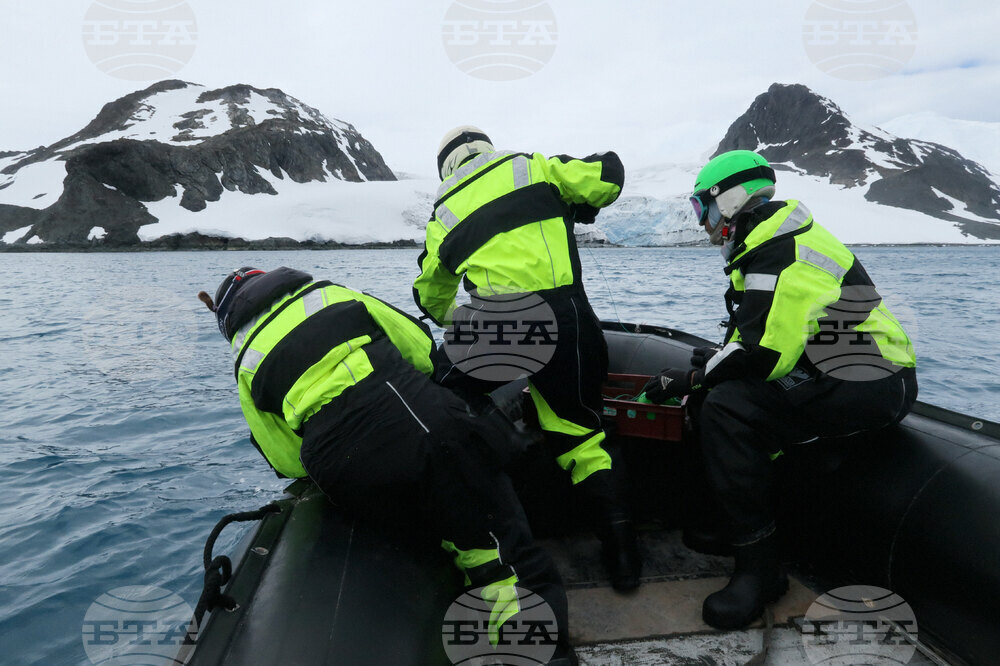
Natural History Museum to Add Eight Species of Fish from Livingston Island to Its Collection
ANTARCTICA, 27.01.2024
A total of eight species of fish for the ichthyological collections of the National Museum of Natural History of the Bulgarian Academy of Sciences will be brought by Assoc. Prof. Dr. Tihomir Stefanov from the Livingston Island aquarium. He also managed to capture a new species - Parachaenichthys charcoti.
"My project on Livingston Island is related to the biological and species diversity of fish in the area. So far - halfway through my stay, the project is going extremely well. With the help of the logistics team at the base, we have managed to do several entries and a dozen surveys. The interesting data that I received complements very well the picture that I had from my previous visits," said in an interview with BTA Assoc. Prof. Dr. Tihomir Stefanov. According to him, the spatial distribution of individual fish species can now be very well assessed. There is a very interesting distribution in relation to the depth at which they occur, he noted.
"The two main fish species that create over 90% of the biomass in the region are the two Notothenia species, the Notothenia coriiceps, and the Notothenia rossi. They inhabit a relatively wide range of depths, but their biomass is mainly concentrated in shallower areas. We even manage to see single specimens swimming almost to the shore - practically down to ten centimetres deep," the scientist said.
It is the fact that the bulk of their populations are concentrated in the shallower areas of the shelf zone, the shallow coastal zone of Livingston Island, that drives the other species, which are much smaller in size - such as the two Trematomus species - to be distributed in the slightly greater depths, where they avoid the competition on the one hand, and the predation of these two large dominant species on the other.
BTA Photo/Emil Granicharov
news.anonymous.signup
news.anonymous.login
A total of eight species of fish for the ichthyological collections of the National Museum of Natural History of the Bulgarian Academy of Sciences will be brought by Assoc. Prof. Dr. Tihomir Stefanov from the Livingston Island aquarium. He also managed to capture a new species - Parachaenichthys charcoti.
"My project on Livingston Island is related to the biological and species diversity of fish in the area. So far - halfway through my stay, the project is going extremely well. With the help of the logistics team at the base, we have managed to do several entries and a dozen surveys. The interesting data that I received complements very well the picture that I had from my previous visits," said in an interview with BTA Assoc. Prof. Dr. Tihomir Stefanov. According to him, the spatial distribution of individual fish species can now be very well assessed. There is a very interesting distribution in relation to the depth at which they occur, he noted.
"The two main fish species that create over 90% of the biomass in the region are the two Notothenia species, the Notothenia coriiceps, and the Notothenia rossi. They inhabit a relatively wide range of depths, but their biomass is mainly concentrated in shallower areas. We even manage to see single specimens swimming almost to the shore - practically down to ten centimetres deep," the scientist said.
It is the fact that the bulk of their populations are concentrated in the shallower areas of the shelf zone, the shallow coastal zone of Livingston Island, that drives the other species, which are much smaller in size - such as the two Trematomus species - to be distributed in the slightly greater depths, where they avoid the competition on the one hand, and the predation of these two large dominant species on the other.
BTA Photo/Emil Granicharov
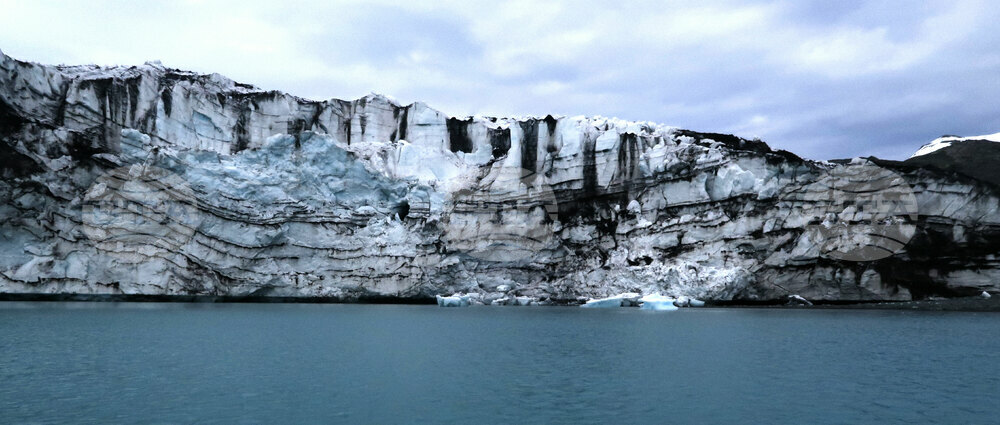
Natural History Museum to Add Eight Species of Fish from Livingston Island to Its Collection
ANTARCTICA, 27.01.2024
A total of eight species of fish for the ichthyological collections of the National Museum of Natural History of the Bulgarian Academy of Sciences will be brought by Assoc. Prof. Dr. Tihomir Stefanov from the Livingston Island aquarium. He also managed to capture a new species - Parachaenichthys charcoti.
"My project on Livingston Island is related to the biological and species diversity of fish in the area. So far - halfway through my stay, the project is going extremely well. With the help of the logistics team at the base, we have managed to do several entries and a dozen surveys. The interesting data that I received complements very well the picture that I had from my previous visits," said in an interview with BTA Assoc. Prof. Dr. Tihomir Stefanov. According to him, the spatial distribution of individual fish species can now be very well assessed. There is a very interesting distribution in relation to the depth at which they occur, he noted.
"The two main fish species that create over 90% of the biomass in the region are the two Notothenia species, the Notothenia coriiceps, and the Notothenia rossi. They inhabit a relatively wide range of depths, but their biomass is mainly concentrated in shallower areas. We even manage to see single specimens swimming almost to the shore - practically down to ten centimetres deep," the scientist said.
It is the fact that the bulk of their populations are concentrated in the shallower areas of the shelf zone, the shallow coastal zone of Livingston Island, that drives the other species, which are much smaller in size - such as the two Trematomus species - to be distributed in the slightly greater depths, where they avoid the competition on the one hand, and the predation of these two large dominant species on the other.
BTA Photo/Emil Granicharov
news.anonymous.signup
news.anonymous.login
A total of eight species of fish for the ichthyological collections of the National Museum of Natural History of the Bulgarian Academy of Sciences will be brought by Assoc. Prof. Dr. Tihomir Stefanov from the Livingston Island aquarium. He also managed to capture a new species - Parachaenichthys charcoti.
"My project on Livingston Island is related to the biological and species diversity of fish in the area. So far - halfway through my stay, the project is going extremely well. With the help of the logistics team at the base, we have managed to do several entries and a dozen surveys. The interesting data that I received complements very well the picture that I had from my previous visits," said in an interview with BTA Assoc. Prof. Dr. Tihomir Stefanov. According to him, the spatial distribution of individual fish species can now be very well assessed. There is a very interesting distribution in relation to the depth at which they occur, he noted.
"The two main fish species that create over 90% of the biomass in the region are the two Notothenia species, the Notothenia coriiceps, and the Notothenia rossi. They inhabit a relatively wide range of depths, but their biomass is mainly concentrated in shallower areas. We even manage to see single specimens swimming almost to the shore - practically down to ten centimetres deep," the scientist said.
It is the fact that the bulk of their populations are concentrated in the shallower areas of the shelf zone, the shallow coastal zone of Livingston Island, that drives the other species, which are much smaller in size - such as the two Trematomus species - to be distributed in the slightly greater depths, where they avoid the competition on the one hand, and the predation of these two large dominant species on the other.
BTA Photo/Emil Granicharov
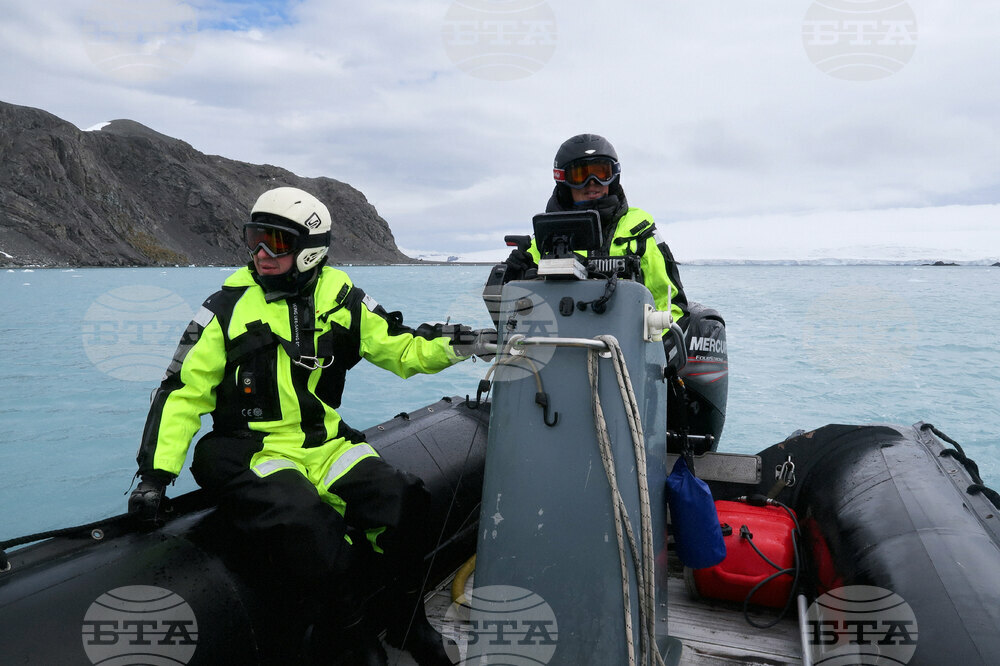
Natural History Museum to Add Eight Species of Fish from Livingston Island to Its Collection
ANTARCTICA, 27.01.2024
A total of eight species of fish for the ichthyological collections of the National Museum of Natural History of the Bulgarian Academy of Sciences will be brought by Assoc. Prof. Dr. Tihomir Stefanov from the Livingston Island aquarium. He also managed to capture a new species - Parachaenichthys charcoti.
"My project on Livingston Island is related to the biological and species diversity of fish in the area. So far - halfway through my stay, the project is going extremely well. With the help of the logistics team at the base, we have managed to do several entries and a dozen surveys. The interesting data that I received complements very well the picture that I had from my previous visits," said in an interview with BTA Assoc. Prof. Dr. Tihomir Stefanov. According to him, the spatial distribution of individual fish species can now be very well assessed. There is a very interesting distribution in relation to the depth at which they occur, he noted.
"The two main fish species that create over 90% of the biomass in the region are the two Notothenia species, the Notothenia coriiceps, and the Notothenia rossi. They inhabit a relatively wide range of depths, but their biomass is mainly concentrated in shallower areas. We even manage to see single specimens swimming almost to the shore - practically down to ten centimetres deep," the scientist said.
It is the fact that the bulk of their populations are concentrated in the shallower areas of the shelf zone, the shallow coastal zone of Livingston Island, that drives the other species, which are much smaller in size - such as the two Trematomus species - to be distributed in the slightly greater depths, where they avoid the competition on the one hand, and the predation of these two large dominant species on the other.
BTA Photo/Emil Granicharov
news.anonymous.signup
news.anonymous.login
A total of eight species of fish for the ichthyological collections of the National Museum of Natural History of the Bulgarian Academy of Sciences will be brought by Assoc. Prof. Dr. Tihomir Stefanov from the Livingston Island aquarium. He also managed to capture a new species - Parachaenichthys charcoti.
"My project on Livingston Island is related to the biological and species diversity of fish in the area. So far - halfway through my stay, the project is going extremely well. With the help of the logistics team at the base, we have managed to do several entries and a dozen surveys. The interesting data that I received complements very well the picture that I had from my previous visits," said in an interview with BTA Assoc. Prof. Dr. Tihomir Stefanov. According to him, the spatial distribution of individual fish species can now be very well assessed. There is a very interesting distribution in relation to the depth at which they occur, he noted.
"The two main fish species that create over 90% of the biomass in the region are the two Notothenia species, the Notothenia coriiceps, and the Notothenia rossi. They inhabit a relatively wide range of depths, but their biomass is mainly concentrated in shallower areas. We even manage to see single specimens swimming almost to the shore - practically down to ten centimetres deep," the scientist said.
It is the fact that the bulk of their populations are concentrated in the shallower areas of the shelf zone, the shallow coastal zone of Livingston Island, that drives the other species, which are much smaller in size - such as the two Trematomus species - to be distributed in the slightly greater depths, where they avoid the competition on the one hand, and the predation of these two large dominant species on the other.
BTA Photo/Emil Granicharov
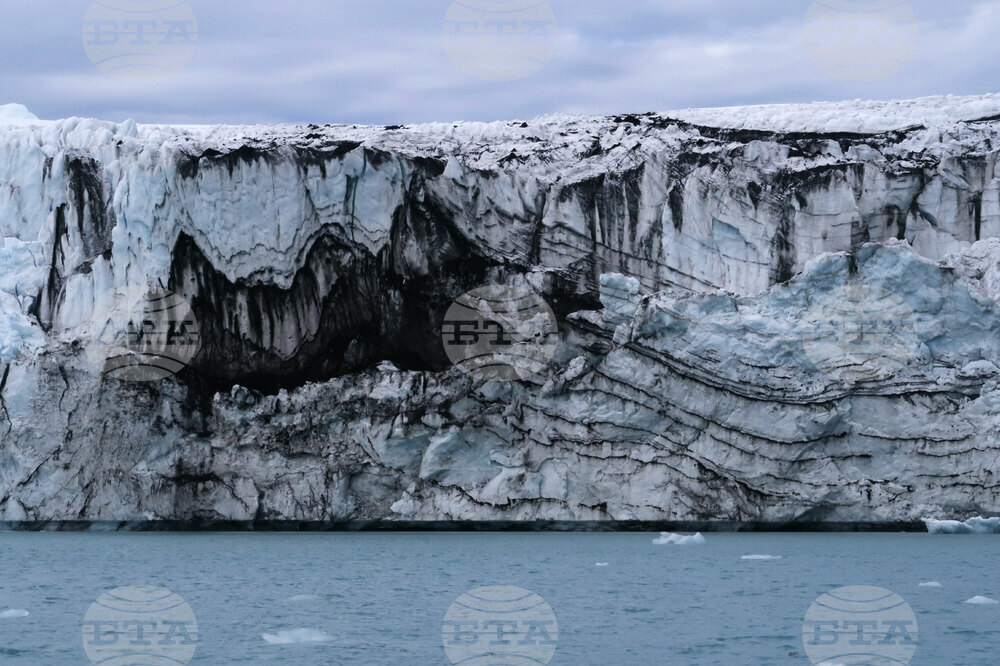
Natural History Museum to Add Eight Species of Fish from Livingston Island to Its Collection
ANTARCTICA, 27.01.2024
A total of eight species of fish for the ichthyological collections of the National Museum of Natural History of the Bulgarian Academy of Sciences will be brought by Assoc. Prof. Dr. Tihomir Stefanov from the Livingston Island aquarium. He also managed to capture a new species - Parachaenichthys charcoti.
"My project on Livingston Island is related to the biological and species diversity of fish in the area. So far - halfway through my stay, the project is going extremely well. With the help of the logistics team at the base, we have managed to do several entries and a dozen surveys. The interesting data that I received complements very well the picture that I had from my previous visits," said in an interview with BTA Assoc. Prof. Dr. Tihomir Stefanov. According to him, the spatial distribution of individual fish species can now be very well assessed. There is a very interesting distribution in relation to the depth at which they occur, he noted.
"The two main fish species that create over 90% of the biomass in the region are the two Notothenia species, the Notothenia coriiceps, and the Notothenia rossi. They inhabit a relatively wide range of depths, but their biomass is mainly concentrated in shallower areas. We even manage to see single specimens swimming almost to the shore - practically down to ten centimetres deep," the scientist said.
It is the fact that the bulk of their populations are concentrated in the shallower areas of the shelf zone, the shallow coastal zone of Livingston Island, that drives the other species, which are much smaller in size - such as the two Trematomus species - to be distributed in the slightly greater depths, where they avoid the competition on the one hand, and the predation of these two large dominant species on the other.
BTA Photo/Emil Granicharov
news.anonymous.signup
news.anonymous.login
A total of eight species of fish for the ichthyological collections of the National Museum of Natural History of the Bulgarian Academy of Sciences will be brought by Assoc. Prof. Dr. Tihomir Stefanov from the Livingston Island aquarium. He also managed to capture a new species - Parachaenichthys charcoti.
"My project on Livingston Island is related to the biological and species diversity of fish in the area. So far - halfway through my stay, the project is going extremely well. With the help of the logistics team at the base, we have managed to do several entries and a dozen surveys. The interesting data that I received complements very well the picture that I had from my previous visits," said in an interview with BTA Assoc. Prof. Dr. Tihomir Stefanov. According to him, the spatial distribution of individual fish species can now be very well assessed. There is a very interesting distribution in relation to the depth at which they occur, he noted.
"The two main fish species that create over 90% of the biomass in the region are the two Notothenia species, the Notothenia coriiceps, and the Notothenia rossi. They inhabit a relatively wide range of depths, but their biomass is mainly concentrated in shallower areas. We even manage to see single specimens swimming almost to the shore - practically down to ten centimetres deep," the scientist said.
It is the fact that the bulk of their populations are concentrated in the shallower areas of the shelf zone, the shallow coastal zone of Livingston Island, that drives the other species, which are much smaller in size - such as the two Trematomus species - to be distributed in the slightly greater depths, where they avoid the competition on the one hand, and the predation of these two large dominant species on the other.
BTA Photo/Emil Granicharov
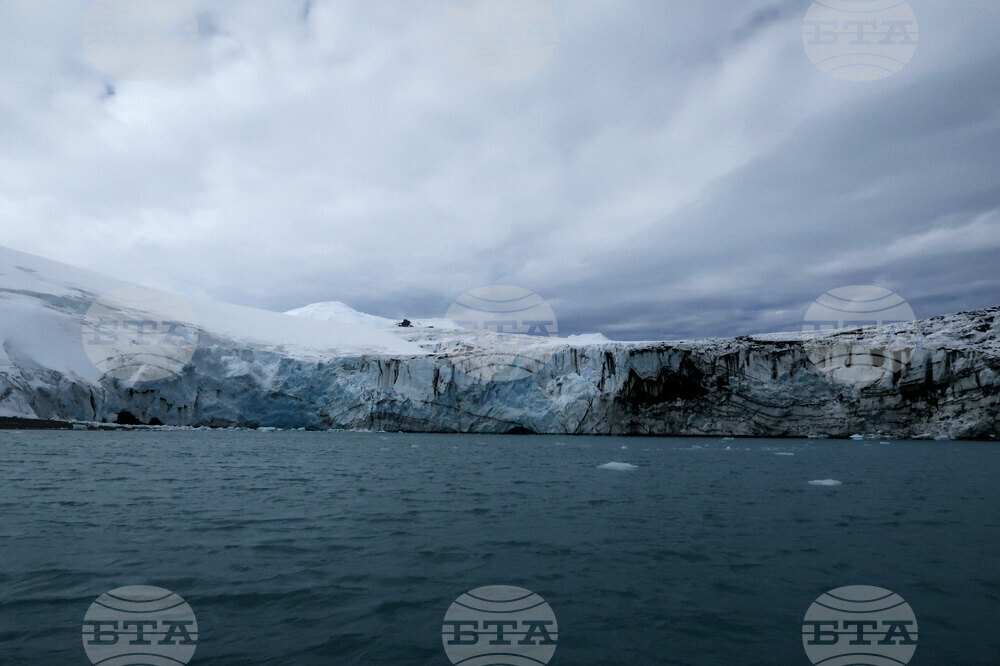
Natural History Museum to Add Eight Species of Fish from Livingston Island to Its Collection
ANTARCTICA, 27.01.2024
A total of eight species of fish for the ichthyological collections of the National Museum of Natural History of the Bulgarian Academy of Sciences will be brought by Assoc. Prof. Dr. Tihomir Stefanov from the Livingston Island aquarium. He also managed to capture a new species - Parachaenichthys charcoti.
"My project on Livingston Island is related to the biological and species diversity of fish in the area. So far - halfway through my stay, the project is going extremely well. With the help of the logistics team at the base, we have managed to do several entries and a dozen surveys. The interesting data that I received complements very well the picture that I had from my previous visits," said in an interview with BTA Assoc. Prof. Dr. Tihomir Stefanov. According to him, the spatial distribution of individual fish species can now be very well assessed. There is a very interesting distribution in relation to the depth at which they occur, he noted.
"The two main fish species that create over 90% of the biomass in the region are the two Notothenia species, the Notothenia coriiceps, and the Notothenia rossi. They inhabit a relatively wide range of depths, but their biomass is mainly concentrated in shallower areas. We even manage to see single specimens swimming almost to the shore - practically down to ten centimetres deep," the scientist said.
It is the fact that the bulk of their populations are concentrated in the shallower areas of the shelf zone, the shallow coastal zone of Livingston Island, that drives the other species, which are much smaller in size - such as the two Trematomus species - to be distributed in the slightly greater depths, where they avoid the competition on the one hand, and the predation of these two large dominant species on the other.
BTA Photo/Emil Granicharov
news.anonymous.signup
news.anonymous.login
A total of eight species of fish for the ichthyological collections of the National Museum of Natural History of the Bulgarian Academy of Sciences will be brought by Assoc. Prof. Dr. Tihomir Stefanov from the Livingston Island aquarium. He also managed to capture a new species - Parachaenichthys charcoti.
"My project on Livingston Island is related to the biological and species diversity of fish in the area. So far - halfway through my stay, the project is going extremely well. With the help of the logistics team at the base, we have managed to do several entries and a dozen surveys. The interesting data that I received complements very well the picture that I had from my previous visits," said in an interview with BTA Assoc. Prof. Dr. Tihomir Stefanov. According to him, the spatial distribution of individual fish species can now be very well assessed. There is a very interesting distribution in relation to the depth at which they occur, he noted.
"The two main fish species that create over 90% of the biomass in the region are the two Notothenia species, the Notothenia coriiceps, and the Notothenia rossi. They inhabit a relatively wide range of depths, but their biomass is mainly concentrated in shallower areas. We even manage to see single specimens swimming almost to the shore - practically down to ten centimetres deep," the scientist said.
It is the fact that the bulk of their populations are concentrated in the shallower areas of the shelf zone, the shallow coastal zone of Livingston Island, that drives the other species, which are much smaller in size - such as the two Trematomus species - to be distributed in the slightly greater depths, where they avoid the competition on the one hand, and the predation of these two large dominant species on the other.
BTA Photo/Emil Granicharov
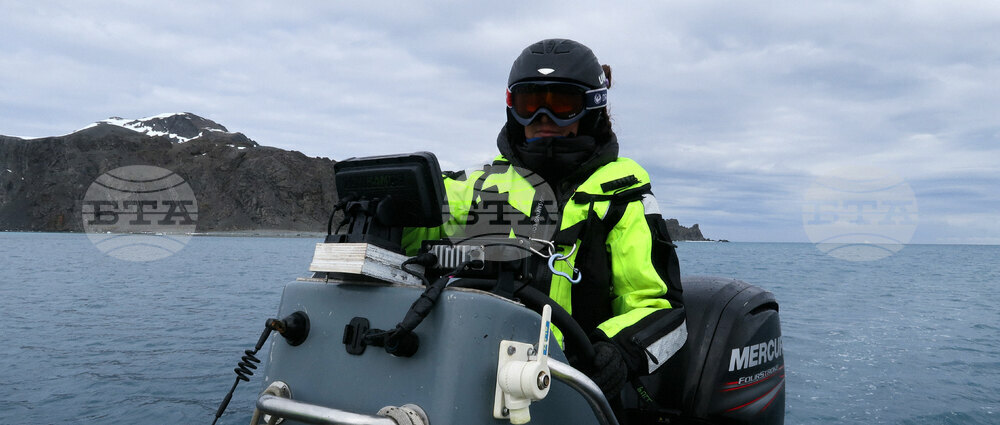
Natural History Museum to Add Eight Species of Fish from Livingston Island to Its Collection
ANTARCTICA, 27.01.2024
A total of eight species of fish for the ichthyological collections of the National Museum of Natural History of the Bulgarian Academy of Sciences will be brought by Assoc. Prof. Dr. Tihomir Stefanov from the Livingston Island aquarium. He also managed to capture a new species - Parachaenichthys charcoti.
"My project on Livingston Island is related to the biological and species diversity of fish in the area. So far - halfway through my stay, the project is going extremely well. With the help of the logistics team at the base, we have managed to do several entries and a dozen surveys. The interesting data that I received complements very well the picture that I had from my previous visits," said in an interview with BTA Assoc. Prof. Dr. Tihomir Stefanov. According to him, the spatial distribution of individual fish species can now be very well assessed. There is a very interesting distribution in relation to the depth at which they occur, he noted.
"The two main fish species that create over 90% of the biomass in the region are the two Notothenia species, the Notothenia coriiceps, and the Notothenia rossi. They inhabit a relatively wide range of depths, but their biomass is mainly concentrated in shallower areas. We even manage to see single specimens swimming almost to the shore - practically down to ten centimetres deep," the scientist said.
It is the fact that the bulk of their populations are concentrated in the shallower areas of the shelf zone, the shallow coastal zone of Livingston Island, that drives the other species, which are much smaller in size - such as the two Trematomus species - to be distributed in the slightly greater depths, where they avoid the competition on the one hand, and the predation of these two large dominant species on the other.
BTA Photo/Emil Granicharov
news.anonymous.signup
news.anonymous.login
A total of eight species of fish for the ichthyological collections of the National Museum of Natural History of the Bulgarian Academy of Sciences will be brought by Assoc. Prof. Dr. Tihomir Stefanov from the Livingston Island aquarium. He also managed to capture a new species - Parachaenichthys charcoti.
"My project on Livingston Island is related to the biological and species diversity of fish in the area. So far - halfway through my stay, the project is going extremely well. With the help of the logistics team at the base, we have managed to do several entries and a dozen surveys. The interesting data that I received complements very well the picture that I had from my previous visits," said in an interview with BTA Assoc. Prof. Dr. Tihomir Stefanov. According to him, the spatial distribution of individual fish species can now be very well assessed. There is a very interesting distribution in relation to the depth at which they occur, he noted.
"The two main fish species that create over 90% of the biomass in the region are the two Notothenia species, the Notothenia coriiceps, and the Notothenia rossi. They inhabit a relatively wide range of depths, but their biomass is mainly concentrated in shallower areas. We even manage to see single specimens swimming almost to the shore - practically down to ten centimetres deep," the scientist said.
It is the fact that the bulk of their populations are concentrated in the shallower areas of the shelf zone, the shallow coastal zone of Livingston Island, that drives the other species, which are much smaller in size - such as the two Trematomus species - to be distributed in the slightly greater depths, where they avoid the competition on the one hand, and the predation of these two large dominant species on the other.
BTA Photo/Emil Granicharov
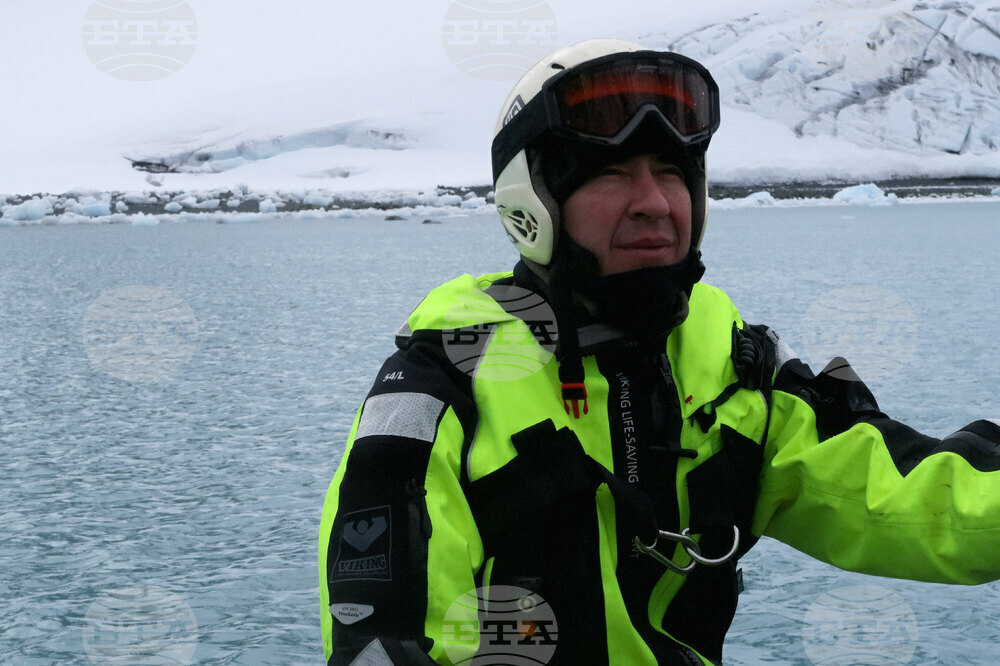
Natural History Museum to Add Eight Species of Fish from Livingston Island to Its Collection
ANTARCTICA, 27.01.2024
A total of eight species of fish for the ichthyological collections of the National Museum of Natural History of the Bulgarian Academy of Sciences will be brought by Assoc. Prof. Dr. Tihomir Stefanov from the Livingston Island aquarium. He also managed to capture a new species - Parachaenichthys charcoti.
"My project on Livingston Island is related to the biological and species diversity of fish in the area. So far - halfway through my stay, the project is going extremely well. With the help of the logistics team at the base, we have managed to do several entries and a dozen surveys. The interesting data that I received complements very well the picture that I had from my previous visits," said in an interview with BTA Assoc. Prof. Dr. Tihomir Stefanov. According to him, the spatial distribution of individual fish species can now be very well assessed. There is a very interesting distribution in relation to the depth at which they occur, he noted.
"The two main fish species that create over 90% of the biomass in the region are the two Notothenia species, the Notothenia coriiceps, and the Notothenia rossi. They inhabit a relatively wide range of depths, but their biomass is mainly concentrated in shallower areas. We even manage to see single specimens swimming almost to the shore - practically down to ten centimetres deep," the scientist said.
It is the fact that the bulk of their populations are concentrated in the shallower areas of the shelf zone, the shallow coastal zone of Livingston Island, that drives the other species, which are much smaller in size - such as the two Trematomus species - to be distributed in the slightly greater depths, where they avoid the competition on the one hand, and the predation of these two large dominant species on the other.
BTA Photo/Emil Granicharov
news.anonymous.signup
news.anonymous.login
A total of eight species of fish for the ichthyological collections of the National Museum of Natural History of the Bulgarian Academy of Sciences will be brought by Assoc. Prof. Dr. Tihomir Stefanov from the Livingston Island aquarium. He also managed to capture a new species - Parachaenichthys charcoti.
"My project on Livingston Island is related to the biological and species diversity of fish in the area. So far - halfway through my stay, the project is going extremely well. With the help of the logistics team at the base, we have managed to do several entries and a dozen surveys. The interesting data that I received complements very well the picture that I had from my previous visits," said in an interview with BTA Assoc. Prof. Dr. Tihomir Stefanov. According to him, the spatial distribution of individual fish species can now be very well assessed. There is a very interesting distribution in relation to the depth at which they occur, he noted.
"The two main fish species that create over 90% of the biomass in the region are the two Notothenia species, the Notothenia coriiceps, and the Notothenia rossi. They inhabit a relatively wide range of depths, but their biomass is mainly concentrated in shallower areas. We even manage to see single specimens swimming almost to the shore - practically down to ten centimetres deep," the scientist said.
It is the fact that the bulk of their populations are concentrated in the shallower areas of the shelf zone, the shallow coastal zone of Livingston Island, that drives the other species, which are much smaller in size - such as the two Trematomus species - to be distributed in the slightly greater depths, where they avoid the competition on the one hand, and the predation of these two large dominant species on the other.
BTA Photo/Emil Granicharov
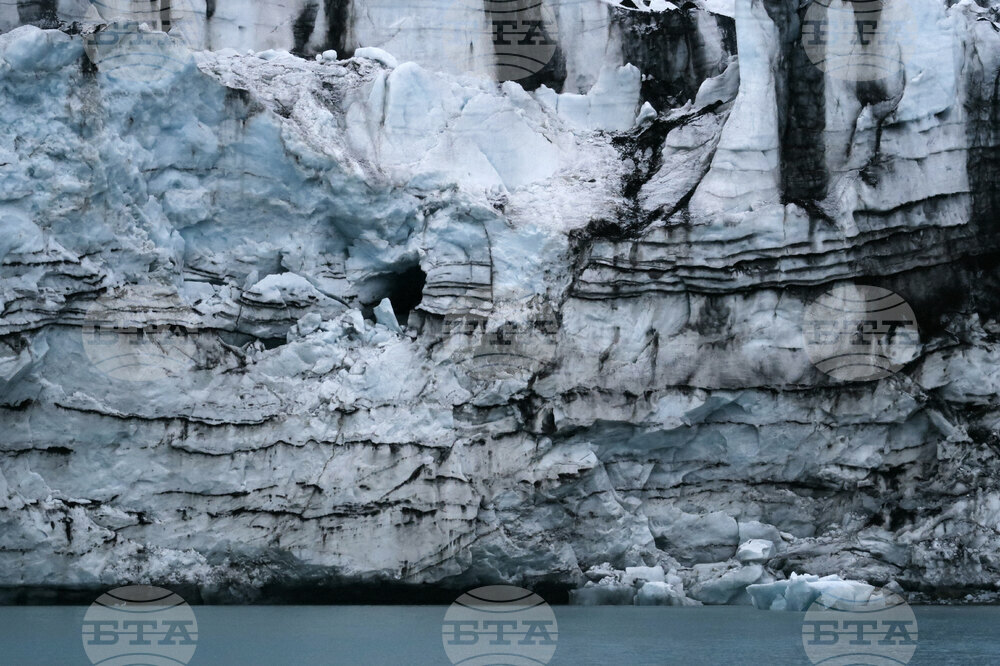
Natural History Museum to Add Eight Species of Fish from Livingston Island to Its Collection
ANTARCTICA, 27.01.2024
A total of eight species of fish for the ichthyological collections of the National Museum of Natural History of the Bulgarian Academy of Sciences will be brought by Assoc. Prof. Dr. Tihomir Stefanov from the Livingston Island aquarium. He also managed to capture a new species - Parachaenichthys charcoti.
"My project on Livingston Island is related to the biological and species diversity of fish in the area. So far - halfway through my stay, the project is going extremely well. With the help of the logistics team at the base, we have managed to do several entries and a dozen surveys. The interesting data that I received complements very well the picture that I had from my previous visits," said in an interview with BTA Assoc. Prof. Dr. Tihomir Stefanov. According to him, the spatial distribution of individual fish species can now be very well assessed. There is a very interesting distribution in relation to the depth at which they occur, he noted.
"The two main fish species that create over 90% of the biomass in the region are the two Notothenia species, the Notothenia coriiceps, and the Notothenia rossi. They inhabit a relatively wide range of depths, but their biomass is mainly concentrated in shallower areas. We even manage to see single specimens swimming almost to the shore - practically down to ten centimetres deep," the scientist said.
It is the fact that the bulk of their populations are concentrated in the shallower areas of the shelf zone, the shallow coastal zone of Livingston Island, that drives the other species, which are much smaller in size - such as the two Trematomus species - to be distributed in the slightly greater depths, where they avoid the competition on the one hand, and the predation of these two large dominant species on the other.
BTA Photo/Emil Granicharov
news.anonymous.signup
news.anonymous.login
A total of eight species of fish for the ichthyological collections of the National Museum of Natural History of the Bulgarian Academy of Sciences will be brought by Assoc. Prof. Dr. Tihomir Stefanov from the Livingston Island aquarium. He also managed to capture a new species - Parachaenichthys charcoti.
"My project on Livingston Island is related to the biological and species diversity of fish in the area. So far - halfway through my stay, the project is going extremely well. With the help of the logistics team at the base, we have managed to do several entries and a dozen surveys. The interesting data that I received complements very well the picture that I had from my previous visits," said in an interview with BTA Assoc. Prof. Dr. Tihomir Stefanov. According to him, the spatial distribution of individual fish species can now be very well assessed. There is a very interesting distribution in relation to the depth at which they occur, he noted.
"The two main fish species that create over 90% of the biomass in the region are the two Notothenia species, the Notothenia coriiceps, and the Notothenia rossi. They inhabit a relatively wide range of depths, but their biomass is mainly concentrated in shallower areas. We even manage to see single specimens swimming almost to the shore - practically down to ten centimetres deep," the scientist said.
It is the fact that the bulk of their populations are concentrated in the shallower areas of the shelf zone, the shallow coastal zone of Livingston Island, that drives the other species, which are much smaller in size - such as the two Trematomus species - to be distributed in the slightly greater depths, where they avoid the competition on the one hand, and the predation of these two large dominant species on the other.
BTA Photo/Emil Granicharov

Natural History Museum to Add Eight Species of Fish from Livingston Island to Its Collection
ANTARCTICA, 27.01.2024
A total of eight species of fish for the ichthyological collections of the National Museum of Natural History of the Bulgarian Academy of Sciences will be brought by Assoc. Prof. Dr. Tihomir Stefanov from the Livingston Island aquarium. He also managed to capture a new species - Parachaenichthys charcoti.
"My project on Livingston Island is related to the biological and species diversity of fish in the area. So far - halfway through my stay, the project is going extremely well. With the help of the logistics team at the base, we have managed to do several entries and a dozen surveys. The interesting data that I received complements very well the picture that I had from my previous visits," said in an interview with BTA Assoc. Prof. Dr. Tihomir Stefanov. According to him, the spatial distribution of individual fish species can now be very well assessed. There is a very interesting distribution in relation to the depth at which they occur, he noted.
"The two main fish species that create over 90% of the biomass in the region are the two Notothenia species, the Notothenia coriiceps, and the Notothenia rossi. They inhabit a relatively wide range of depths, but their biomass is mainly concentrated in shallower areas. We even manage to see single specimens swimming almost to the shore - practically down to ten centimetres deep," the scientist said.
It is the fact that the bulk of their populations are concentrated in the shallower areas of the shelf zone, the shallow coastal zone of Livingston Island, that drives the other species, which are much smaller in size - such as the two Trematomus species - to be distributed in the slightly greater depths, where they avoid the competition on the one hand, and the predation of these two large dominant species on the other.
BTA Photo/Emil Granicharov
news.anonymous.signup
news.anonymous.login
A total of eight species of fish for the ichthyological collections of the National Museum of Natural History of the Bulgarian Academy of Sciences will be brought by Assoc. Prof. Dr. Tihomir Stefanov from the Livingston Island aquarium. He also managed to capture a new species - Parachaenichthys charcoti.
"My project on Livingston Island is related to the biological and species diversity of fish in the area. So far - halfway through my stay, the project is going extremely well. With the help of the logistics team at the base, we have managed to do several entries and a dozen surveys. The interesting data that I received complements very well the picture that I had from my previous visits," said in an interview with BTA Assoc. Prof. Dr. Tihomir Stefanov. According to him, the spatial distribution of individual fish species can now be very well assessed. There is a very interesting distribution in relation to the depth at which they occur, he noted.
"The two main fish species that create over 90% of the biomass in the region are the two Notothenia species, the Notothenia coriiceps, and the Notothenia rossi. They inhabit a relatively wide range of depths, but their biomass is mainly concentrated in shallower areas. We even manage to see single specimens swimming almost to the shore - practically down to ten centimetres deep," the scientist said.
It is the fact that the bulk of their populations are concentrated in the shallower areas of the shelf zone, the shallow coastal zone of Livingston Island, that drives the other species, which are much smaller in size - such as the two Trematomus species - to be distributed in the slightly greater depths, where they avoid the competition on the one hand, and the predation of these two large dominant species on the other.
BTA Photo/Emil Granicharov
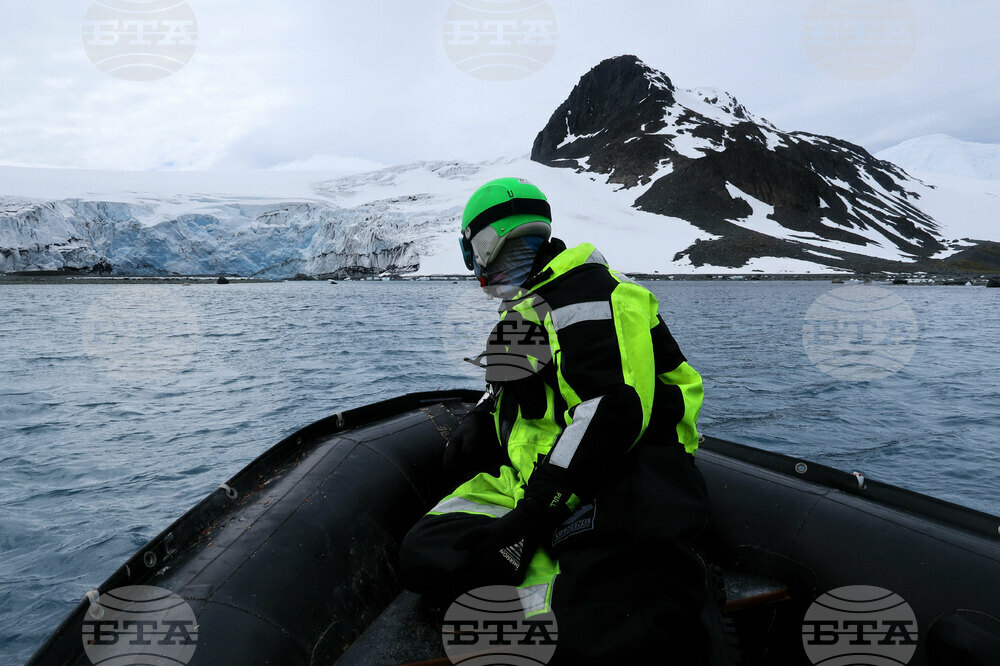
Natural History Museum to Add Eight Species of Fish from Livingston Island to Its Collection
ANTARCTICA, 27.01.2024
A total of eight species of fish for the ichthyological collections of the National Museum of Natural History of the Bulgarian Academy of Sciences will be brought by Assoc. Prof. Dr. Tihomir Stefanov from the Livingston Island aquarium. He also managed to capture a new species - Parachaenichthys charcoti.
"My project on Livingston Island is related to the biological and species diversity of fish in the area. So far - halfway through my stay, the project is going extremely well. With the help of the logistics team at the base, we have managed to do several entries and a dozen surveys. The interesting data that I received complements very well the picture that I had from my previous visits," said in an interview with BTA Assoc. Prof. Dr. Tihomir Stefanov. According to him, the spatial distribution of individual fish species can now be very well assessed. There is a very interesting distribution in relation to the depth at which they occur, he noted.
"The two main fish species that create over 90% of the biomass in the region are the two Notothenia species, the Notothenia coriiceps, and the Notothenia rossi. They inhabit a relatively wide range of depths, but their biomass is mainly concentrated in shallower areas. We even manage to see single specimens swimming almost to the shore - practically down to ten centimetres deep," the scientist said.
It is the fact that the bulk of their populations are concentrated in the shallower areas of the shelf zone, the shallow coastal zone of Livingston Island, that drives the other species, which are much smaller in size - such as the two Trematomus species - to be distributed in the slightly greater depths, where they avoid the competition on the one hand, and the predation of these two large dominant species on the other.
BTA Photo/Emil Granicharov
news.anonymous.signup
news.anonymous.login
A total of eight species of fish for the ichthyological collections of the National Museum of Natural History of the Bulgarian Academy of Sciences will be brought by Assoc. Prof. Dr. Tihomir Stefanov from the Livingston Island aquarium. He also managed to capture a new species - Parachaenichthys charcoti.
"My project on Livingston Island is related to the biological and species diversity of fish in the area. So far - halfway through my stay, the project is going extremely well. With the help of the logistics team at the base, we have managed to do several entries and a dozen surveys. The interesting data that I received complements very well the picture that I had from my previous visits," said in an interview with BTA Assoc. Prof. Dr. Tihomir Stefanov. According to him, the spatial distribution of individual fish species can now be very well assessed. There is a very interesting distribution in relation to the depth at which they occur, he noted.
"The two main fish species that create over 90% of the biomass in the region are the two Notothenia species, the Notothenia coriiceps, and the Notothenia rossi. They inhabit a relatively wide range of depths, but their biomass is mainly concentrated in shallower areas. We even manage to see single specimens swimming almost to the shore - practically down to ten centimetres deep," the scientist said.
It is the fact that the bulk of their populations are concentrated in the shallower areas of the shelf zone, the shallow coastal zone of Livingston Island, that drives the other species, which are much smaller in size - such as the two Trematomus species - to be distributed in the slightly greater depths, where they avoid the competition on the one hand, and the predation of these two large dominant species on the other.
BTA Photo/Emil Granicharov
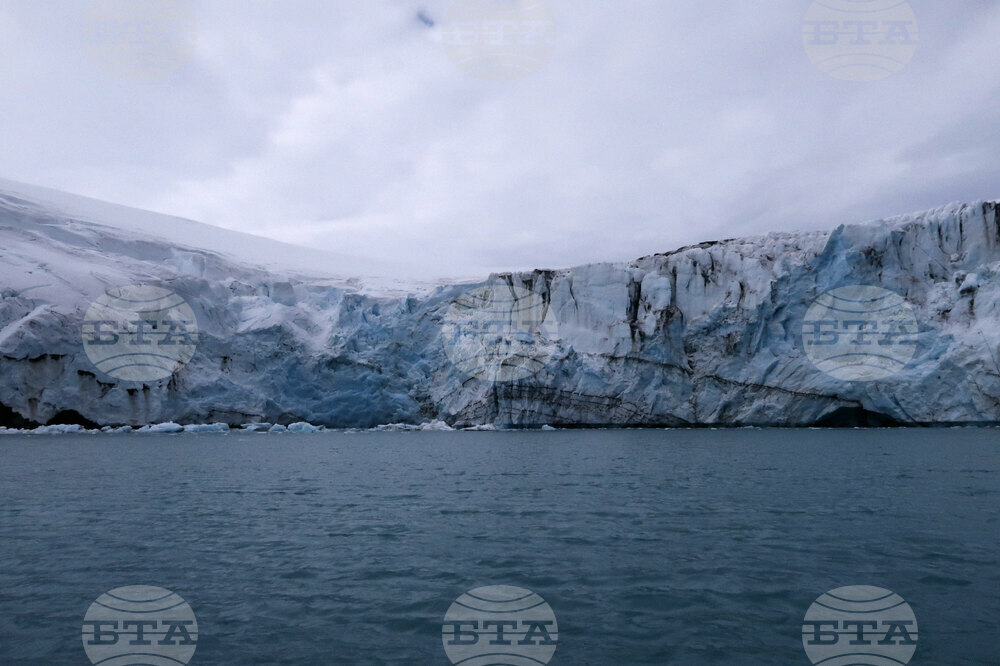
Natural History Museum to Add Eight Species of Fish from Livingston Island to Its Collection
ANTARCTICA, 27.01.2024
A total of eight species of fish for the ichthyological collections of the National Museum of Natural History of the Bulgarian Academy of Sciences will be brought by Assoc. Prof. Dr. Tihomir Stefanov from the Livingston Island aquarium. He also managed to capture a new species - Parachaenichthys charcoti.
"My project on Livingston Island is related to the biological and species diversity of fish in the area. So far - halfway through my stay, the project is going extremely well. With the help of the logistics team at the base, we have managed to do several entries and a dozen surveys. The interesting data that I received complements very well the picture that I had from my previous visits," said in an interview with BTA Assoc. Prof. Dr. Tihomir Stefanov. According to him, the spatial distribution of individual fish species can now be very well assessed. There is a very interesting distribution in relation to the depth at which they occur, he noted.
"The two main fish species that create over 90% of the biomass in the region are the two Notothenia species, the Notothenia coriiceps, and the Notothenia rossi. They inhabit a relatively wide range of depths, but their biomass is mainly concentrated in shallower areas. We even manage to see single specimens swimming almost to the shore - practically down to ten centimetres deep," the scientist said.
It is the fact that the bulk of their populations are concentrated in the shallower areas of the shelf zone, the shallow coastal zone of Livingston Island, that drives the other species, which are much smaller in size - such as the two Trematomus species - to be distributed in the slightly greater depths, where they avoid the competition on the one hand, and the predation of these two large dominant species on the other.
BTA Photo/Emil Granicharov
news.anonymous.signup
news.anonymous.login
A total of eight species of fish for the ichthyological collections of the National Museum of Natural History of the Bulgarian Academy of Sciences will be brought by Assoc. Prof. Dr. Tihomir Stefanov from the Livingston Island aquarium. He also managed to capture a new species - Parachaenichthys charcoti.
"My project on Livingston Island is related to the biological and species diversity of fish in the area. So far - halfway through my stay, the project is going extremely well. With the help of the logistics team at the base, we have managed to do several entries and a dozen surveys. The interesting data that I received complements very well the picture that I had from my previous visits," said in an interview with BTA Assoc. Prof. Dr. Tihomir Stefanov. According to him, the spatial distribution of individual fish species can now be very well assessed. There is a very interesting distribution in relation to the depth at which they occur, he noted.
"The two main fish species that create over 90% of the biomass in the region are the two Notothenia species, the Notothenia coriiceps, and the Notothenia rossi. They inhabit a relatively wide range of depths, but their biomass is mainly concentrated in shallower areas. We even manage to see single specimens swimming almost to the shore - practically down to ten centimetres deep," the scientist said.
It is the fact that the bulk of their populations are concentrated in the shallower areas of the shelf zone, the shallow coastal zone of Livingston Island, that drives the other species, which are much smaller in size - such as the two Trematomus species - to be distributed in the slightly greater depths, where they avoid the competition on the one hand, and the predation of these two large dominant species on the other.
BTA Photo/Emil Granicharov
Buy a photo
Please confirm photo buy. If you continue this purchase will be deducted from your active subscription.
Photo Download
Please confirm photo download










